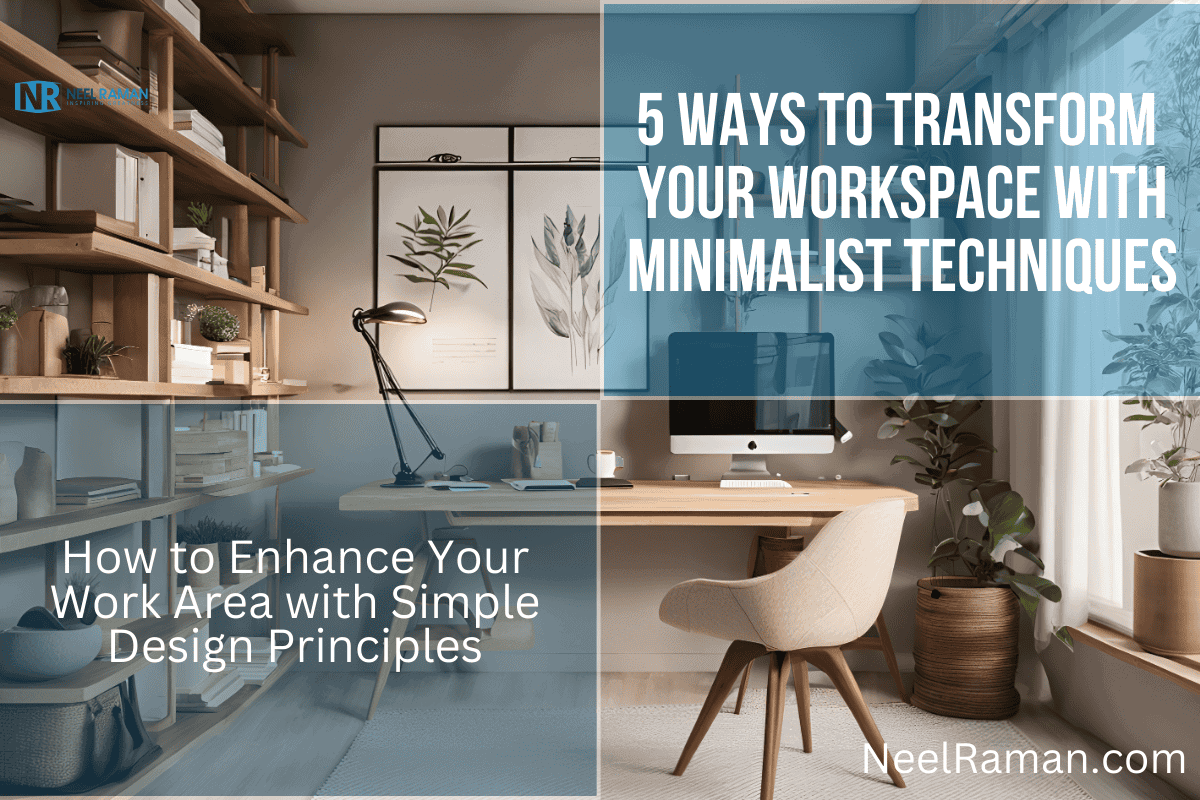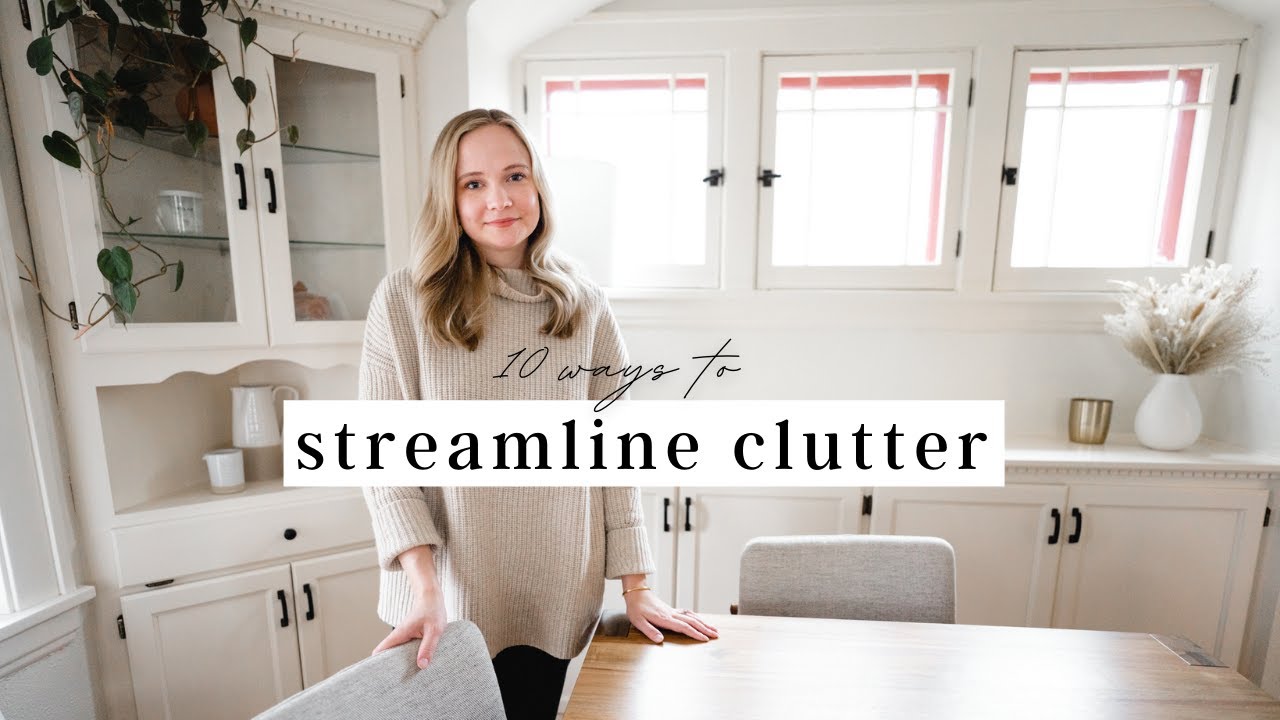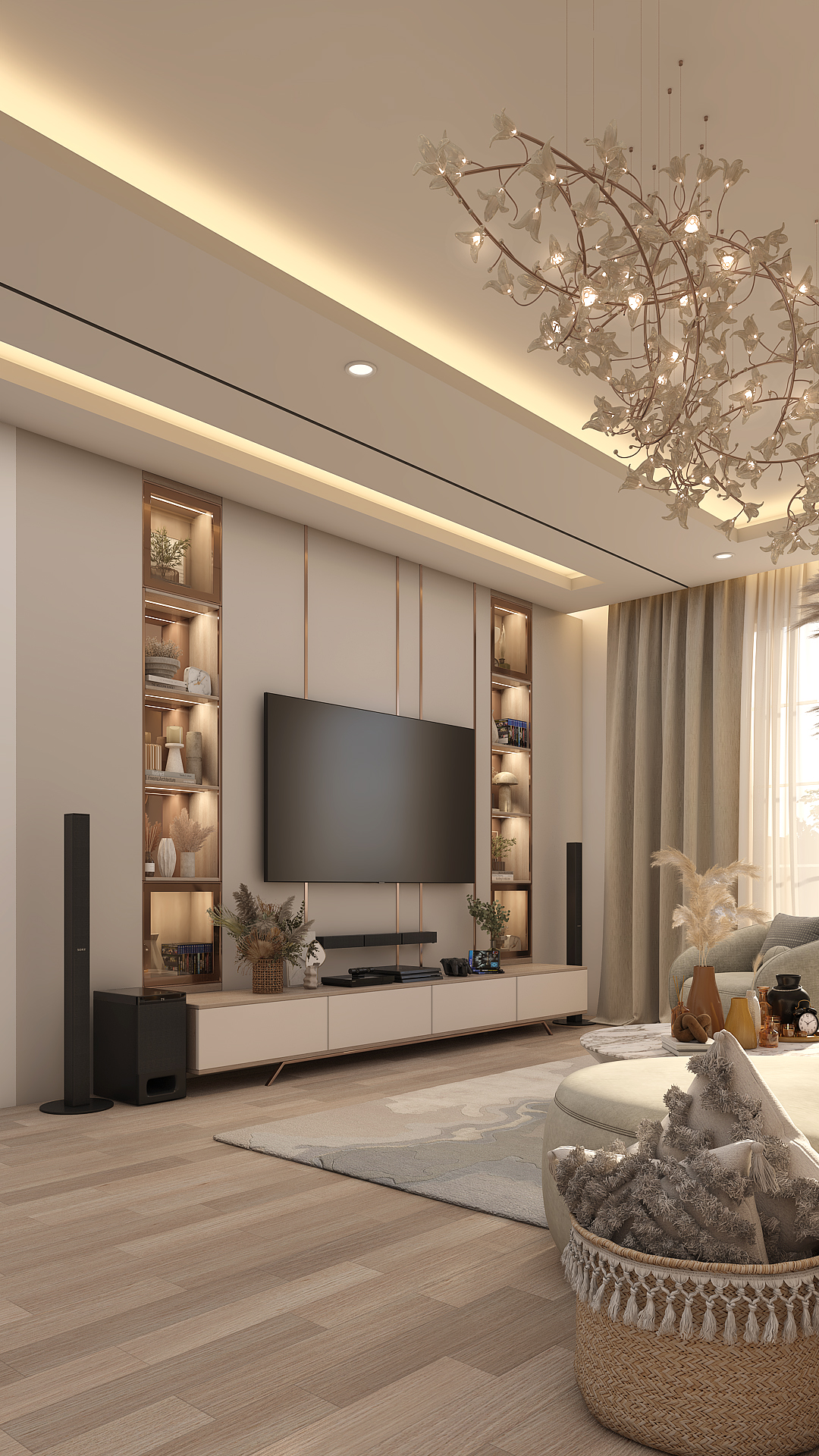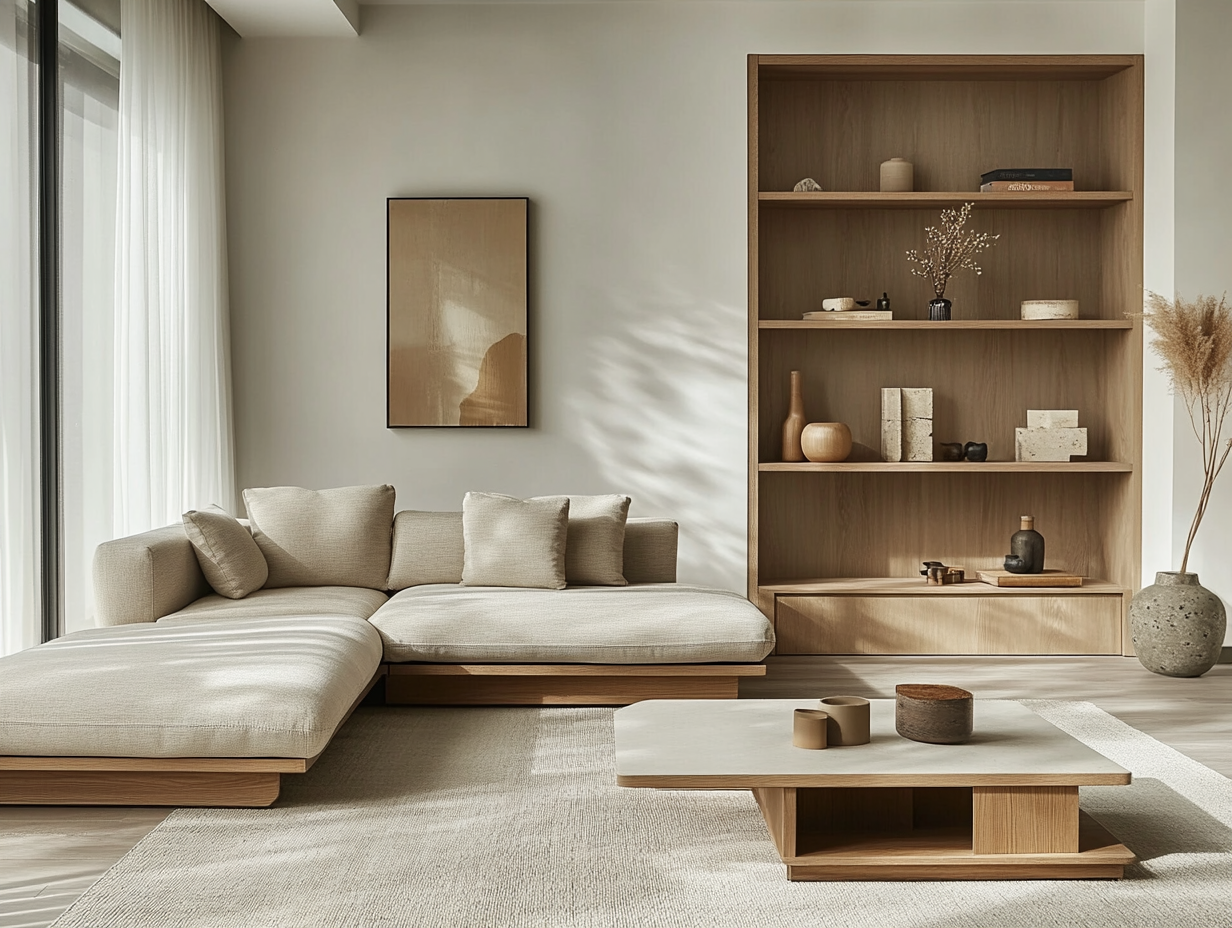Personal Organization and Minimalism: Creating Functional and Stylish Environments

Understanding the Shift Toward Minimalism
In today’s fast-paced world, where information flows constantly and choices seem endless, many individuals find themselves overwhelmed. Embracing personal organization and minimalism offers a way to regain control and foster a more serene lifestyle. These philosophies prioritize simplicity, promoting clarity as well as increasing productivity. By transforming cluttered environments into tranquil retreats, people can enhance their overall well-being. But what steps can one take to cultivate these calming spaces in their everyday lives?
Key Benefits of Minimalism
- Increased Focus: Studies suggest that clutter is a significant distraction, impairing our ability to concentrate. By minimizing distractions, individuals experience improved focus, enabling them to engage more deeply with their work or hobbies. Whether it’s a home office or a study space, having fewer items in view can lead to sharper thinking and creativity.
- Enhanced Aesthetic: Minimalist design is characterized by clean lines, neutral tones, and the elimination of superfluous decoration. This not only creates visually appealing spaces but also promotes a sense of balance. For instance, a living room with a simple color palette and strategically chosen art can evoke feelings of peace, making it an inviting place for relaxation or entertainment.
- Less Stress: Clutter can lead to immediate feelings of stress and anxiety. Adopting a minimalist lifestyle encourages individuals to organize their belongings, fostering an environment of order. For example, a tidy kitchen with only essential utensils in easy reach can simplify meal preparation and reduce the chaos associated with cooking.
Functional Strategies for Organization
To successfully implement minimalist principles, consider these actionable tips:
- Assess Your Belongings: Take inventory of items you own, evaluating their necessity and personal value. Consider whether an item is used frequently or if it simply occupies space. Keeping only those items that serve a clear purpose or bring joy—according to Marie Kondo’s philosophy—can streamline your environment.
- Invest in Quality: Rather than filling your space with numerous cheaper products, focus on acquiring fewer but high-quality items that fulfill multiple functions. For instance, a well-designed sofa can serve as both seating and a bed for guests, maximizing your living area’s utility while maintaining a chic aesthetic.
- Establish Routines: Building consistent habits plays a vital role in maintaining organization. For instance, dedicating just ten minutes each evening to put items back in their designated places can significantly reduce clutter. This habitual organization ensures that spaces remain functional and tranquil while preventing the accumulation of unnecessary items.
By further exploring personal organization techniques aligned with minimalist design principles, individuals can create environments that reflect both style and functionality. This journey to simplicity and order not only transforms physical spaces but also cultivates internal clarity and peace. Are you prepared to embark on this transformative path?
DISCOVER MORE: Click here for tips on simplifying your wardrobe
Embracing the Essentials: The Path to Functionality
Transitioning to a minimalist lifestyle begins with a conscious choice to embrace only the essentials. This journey requires dedication and introspection, as it calls for individuals to reevaluate their possessions and their purpose within their lives. Understanding that every item impacts your mental space is crucial in creating functional environments that merge style with utility. Thus, one must approach personal organization not just as a task, but as an evolving mindset.

Clarity Through Categorization
One effective approach to establishing a minimalist environment is through the art of categorization. By grouping similar items together, individuals can gain clarity about what they actually need versus what they think they need. Here are some strategies for successful categorization:
- Room by Room Evaluation: Tackle each room as a separate entity. This allows for focused attention, reducing the overwhelm that often accompanies decluttering. For example, approach the kitchen with a mindset directed toward functionality: categorize utensils, appliances, and pantry items. Are all these items necessary for your culinary practices?
- The Four-Box Method: As you categorize, implement the four-box method: Keep, Donate, Trash, and Relocate. This straightforward system streamlines the decision-making process and visually clarifies what remains essential. It promotes accountability, as you’re physically forced to confront the items in your life.
- Digital Decluttering: Minimalism isn’t limited to physical items. With countless applications, emails, and digital files vying for attention, maintaining a clean digital workspace is equally important. Consider archiving older documents, unsubscribing from unnecessary email lists, and organizing files into clearly labeled folders to enhance your digital space’s efficiency.
Incorporating Functional Design
Once that essential filtering has been completed, the next step is to focus on functional design. A minimalist aesthetic can greatly complement a well-organized environment. Here are key elements to consider:
- Multi-Functional Furniture: Invest in pieces that serve dual purposes. A coffee table with built-in storage can keep living areas clear while maintaining a polished look. Furthermore, consider items like ottomans that can act both as seating and storage.
- Neutral Color Palettes: Stick to a color scheme that promotes calmness and tranquility. Soft, neutral tones can create a harmonious environment, making the space feel larger and less cluttered. Complement these hues with a few carefully selected bold decor items to maintain interest without overwhelming the senses.
- Strategic Lighting: Proper lighting transforms a space. Natural light is ideal, so consider window treatments that allow for brightness while offering privacy. Layered lighting, such as using floor and table lamps, creates ambiance and welcomes warmth without adding visual chaos.
By focusing on these strategies, individuals can not only declutter their spaces but also cultivate an atmosphere that enhances both functionality and style. As you embark on this journey towards a more organized and minimalist lifestyle, remember that the end goal is to create a sanctuary where both physical and mental clarity can thrive. Is it time for you to redefine what you truly value in your environment?
| Advantages | Key Features |
|---|---|
| Enhanced Focus | Minimalistic spaces reduce distractions, allowing for greater concentration on tasks. |
| Increased Productivity | With a well-organized environment, time spent searching for items is minimized, boosting overall efficiency. |
| Stress Reduction | An uncluttered space promotes a sense of peace and serenity in your surroundings. |
| Stylish Simplicity | Minimalism marries aesthetics with functionality, producing visually appealing yet practical living spaces. |
Adopting a minimalist approach in personal organization can revolutionize the way you interact with your spaces. Not only does it enhance focus by eliminating clutter, but it also cultivates an environment that is inherently peaceful. By reducing distractions, individuals often find they are more productive and capable of reaching their goals efficiently. Additionally, simplified, well-organized areas can significantly reduce stress, leading to an overall improvement in mental well-being. A minimalist interior design emphasizes stylish simplicity and functionality, allowing you to maintain an aesthetic appeal while benefiting from effective organization techniques. Discovering how to merge these qualities can lead to environments that inspire innovation and creativity while also being distinctly personal. Embrace the world of personal organization and minimalism to unlock your potential in creating spaces that truly work for you.
DISCOVER MORE: Click here to learn how minimalism can enhance your daily routine
Mindful Maintenance: Sustaining Your Minimalist Sanctuary
After diligently curating a space that embodies functionality and style, the next crucial step is to implement systems that maintain this harmony. Embracing personal organization through mindful maintenance not only preserves your minimalist efforts but also enhances your overall living experience. This journey is about continuous refinement, encouraging you to remain engaged with your environment and adapt as necessary.
Establishing Daily Routines
Daily routines form the backbone of maintaining an organized space. Here are effective strategies that foster consistent upkeep:
- The One In, One Out Rule: To prevent accumulation, adopt the principle of one in, one out. Whenever you purchase or acquire a new item, make it a habit to remove an existing item from your space. This practice cultivates a discerning approach to consumption and space management.
- 10-Minute Daily Decluttering: Set aside just ten minutes each day to declutter your home. Tackle a specific area or item, such as the kitchen counter or the pile of mail on your table. This small but persistent effort prevents clutter from piling up and keeps your environment fluid.
- Seasonal Overhaul: Mark your calendar for seasonal decluttering sessions. These moments can act as checkpoints, inviting reflection on the items within your space. Many individuals find success during spring cleaning, but aligning your overhaul with the changing seasons can provide fresh perspectives year-round.
Creating Smart Storage Solutions
Effective storage solutions are vital components of personal organization and minimalism. Thoughtfully designed storage not only keeps spaces uncluttered but also adds to the aesthetic appeal:
- Vertical Storage: Maximize floor space by utilizing vertical storage solutions such as shelving units or wall-mounted baskets. This technique not only opens up the room but also creates visual interest while maintaining functionality. Think about installing floating shelves in living areas for an organized yet stylish display of books and decor.
- Hidden Storage Options: Furniture with hidden storage compartments, such as benches or beds with drawers, can be invaluable. These pieces allow for utility without compromising on style, enabling individuals to tuck away seasonal items or seldom-used equipment while maintaining a clean environment.
- Labeling Systems: A labeling system can significantly enhance the efficiency of your storage solutions. Clear and concise labels on bins or shelves not only help you remember where items belong but also make finding what you need a swift and straightforward task.
Incorporating Mindfulness into Personal Organization
Finally, weaving mindfulness into your personal organization process enriches the experience. Approaching your environment with intentionality encourages a deeper connection to your surroundings:
- Reflection on Intentions: Regularly reflect on your intentions behind particular possessions. Ask yourself if each item contributes to your current lifestyle and aligns with your minimalist goals. This reflective practice aids in fostering a deeper awareness of the things that truly matter.
- Mindful Decorating: When adding decor or personal touches to your space, do so with mindfulness. Select pieces that evoke positive emotions or memories but avoid filling your space with items simply for the sake of decoration. A carefully chosen artwork or plant can have a significant impact on the ambiance without overwhelming your environment.
- Cultivating Gratitude: Foster a sense of gratitude for the space and items you have. Recognizing the value of your minimalist lifestyle will encourage you to take better care of your environment and continuously refine your organization process to align with your principles.
By establishing thoughtful routines, implementing smart storage solutions, and infusing mindfulness into your personal organization practices, you cultivate a lifestyle that enriches not only your physical space but also your mental well-being. As the journey of minimalism continues, consider the evolving nature of your environment and the ongoing opportunities for growth it presents. Your minimalist sanctuary is not just a place to live, but a vibrant reflection of your values and aspirations.
DIVE DEEPER: Click here to learn more
Final Thoughts: The Harmony of Minimalism and Personal Organization
In a world where excess often reigns, personal organization and minimalism present an opportunity to reclaim our spaces and redefine our lifestyles. By embracing simplicity, we create environments that are not only functional but also stylish, reflecting our true selves. The journey begins with conscious choices—curating meaningful possessions, engaging in routine maintenance, and establishing effective storage solutions that enhance our living spaces.
Moreover, integrating mindfulness into our organization practices provides a deeper connection to our belongings and surroundings. As you reflect on your individual needs and values, you cultivate a greater appreciation for the items you choose to keep. This ongoing dialogue with your space encourages an evolving atmosphere, allowing for adaptability as your life circumstances change.
Ultimately, the quest for a minimalist sanctuary is a personal evolution, encouraging us to discover what truly adds value to our lives. Whether you are embarking on a decluttering journey or seeking to invigorate an already organized environment, remember that every small step counts. By fostering a commitment to mindful organization and style, you not only design a functional environment but also cultivate a lasting, positive impact on your mental well-being and overall quality of life.
Let the principles of personal organization and minimalism guide you forward, as you create spaces that serve your needs while celebrating the beauty of simplicity.


